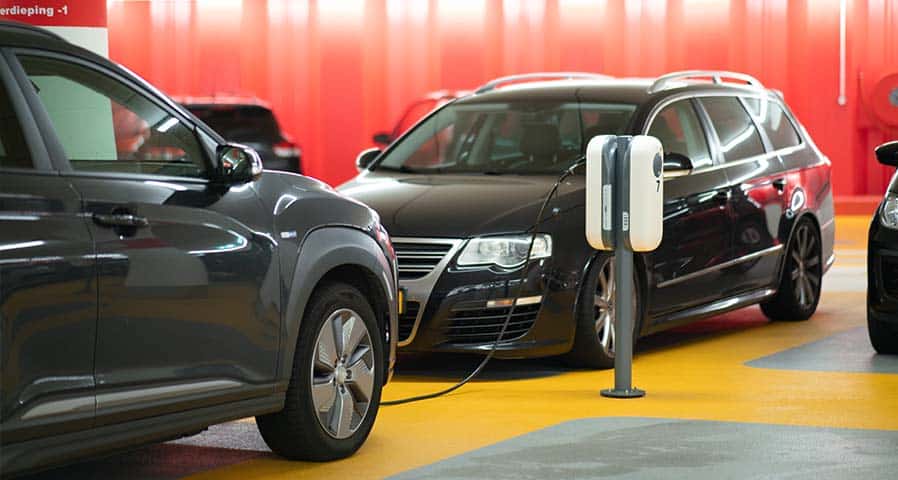Offering EV charging at your commercial property comes with benefits like attracting new customers, boosting brand recognition, and highlighting your commitment to a more sustainable future. While deciding on a funding option for EV charging is the first step, the next is creating an EV charging business model.
A business model for EV charging can offer free charging, collecting a fee from drivers to partially cover operating costs, or using the charging stations as an additional source of revenue. Here’s a closer look at the three options.
If you have not read our blog on EV charger funding options, we suggest starting there. To read, Funding Options for Businesses Installing EV Chargers click here.
EV Charging Business Model Options
Each of the following business models for EV charging fits different company objectives and drivers’ needs. What works for one business may not be a good fit for yours.
Offer Free Charging to Everyone
Using this EV charging business model means you are often operating the stations at a potential loss. The goal of this model is to attract and retain existing and new consumers. Instead of seeing additional revenue from the EV chargers, you are relying on business growth to help offset operational costs.
There is a benefit to this business strategy, you are improving your brand image and boosting customer loyalty. Offering free EV charging can also help you attract and retain top talent.
Businesses with Level 2 chargers are often best suited for this model. The average charging time is around 45 minutes, giving consumers time to eat and/or shop. Customers can top off their batteries while visiting your business. Hotels and apartment complexes can also benefit by offering free charging to residents.
Use Fee-for-Charging to Recover All or Part of Your Costs
You can recoup some or all of the expenses associated with installing, maintaining, and operating EV chargers with this business model. You can choose to set fees to only cover operational costs like maintenance and electricity usage. Or increase the fees to cover all of the expenses, including purchasing and installation.
While most EV drivers are accustomed to paying a fee, you want to ensure yours are competitive. Most EV drivers also charge their vehicles at home and are familiar with electricity rate costs. So, it’s a good idea to do some research before setting your fees. Finding out what others are charging will help prevent future issues and ensure drivers are willing to use your stations.
Don’t forget about the driver’s experience when you are charging a fee. You want it to be as seamless as possible. Consider allowing users to connect to the charger and pay using an app or QR code. You can also install an RFID card or credit card reader.
Apogee Charging Solutions offers one of the most advanced EV charging operating systems on the market today, with customizable payment options and autonomous revenue generation and intelligent energy management.
Make a Profit
This business model for EV charging is similar to the cost-recovery plan. The primary difference is the fees, they are typically set higher. The goal is to cover operating costs and make a profit. However, be careful not to set the fees too high. You do not want to discourage drivers from using your charging stations.
Businesses catering to long-distance drivers, MUDs, renters, and homeowners who are unable to charge at home are often a good fit for this model. The EV charging funding solution can be either a hybrid model, where costs are shared between you and the EVSP or you can take responsibility for all of the expenses.
EV Chargers from Apogee Charging Solutions
To learn more about these EV charging business models, contact Apogee Charging Solutions today. To speak with one of our expert about EV charging stations and your business model options, call 484-816-2076, email [email protected], or you can schedule a call that fits your needs by clicking the button below.








0 Comments